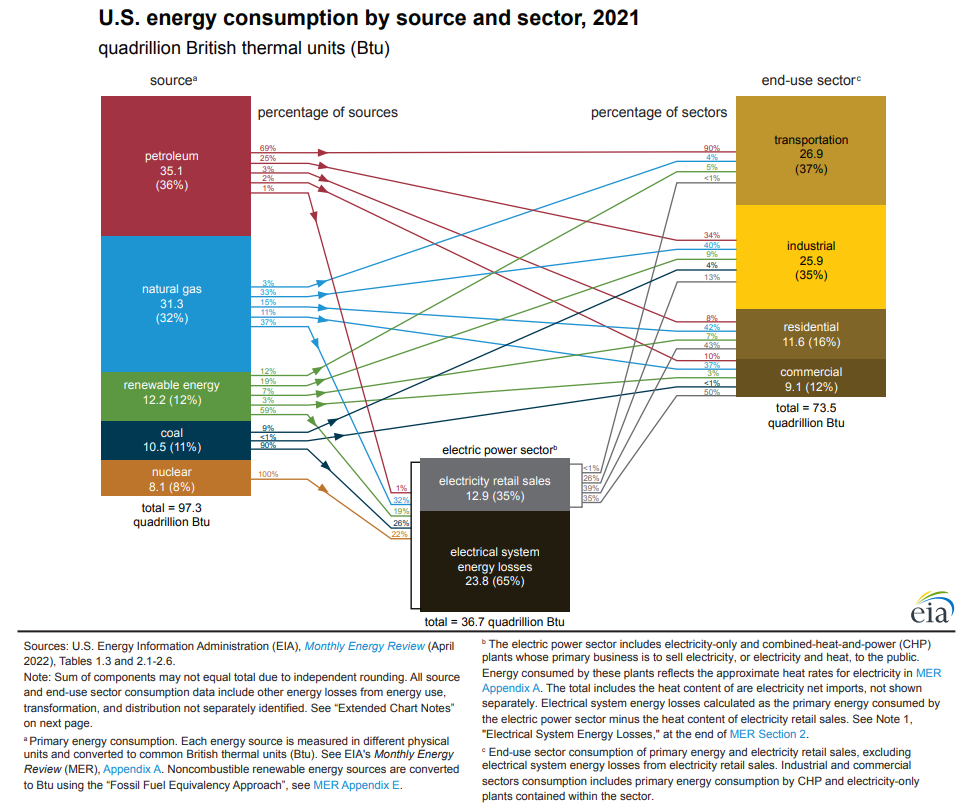How efficient is the US energy system?

Welcome to our comprehensive analysis of the efficiency of the US energy system. In this article, we will delve into various aspects of the energy system, including its overview, factors affecting efficiency, current measures and policies, challenges, successful case studies, technological innovations, future prospects, and more. So, let's get started!
- Overview of the US Energy System
- Factors Affecting Energy Efficiency
- Current Energy Efficiency Measures and Policies
- Challenges in Improving Energy Efficiency
- Case Studies: Successful Energy Efficiency Initiatives
- Technological Innovations and their Impact on Energy Efficiency
- Future Prospects and Goals for Energy Efficiency
- Conclusion
- Frequently Asked Questions
Overview of the US Energy System
The US energy system is a complex network of production, distribution, and consumption of various energy sources. It encompasses a wide range of sectors, including electricity generation, transportation, industrial processes, and residential and commercial buildings. The energy sources utilized in the US energy system include fossil fuels like coal, natural gas, and petroleum, as well as renewable sources such as solar, wind, hydro, and geothermal energy.
Factors Affecting Energy Efficiency
There are several factors that influence the efficiency of the US energy system. These factors include technological advancements, infrastructure, energy consumption patterns, government policies, market dynamics, and public awareness. Understanding these factors is crucial for identifying areas where energy efficiency can be improved.
Current Energy Efficiency Measures and Policies
The US government has implemented various measures and policies to promote energy efficiency. These include setting energy efficiency standards for appliances and vehicles, incentivizing the adoption of renewable energy technologies, promoting energy-efficient building codes, and providing financial assistance for energy efficiency upgrades. Additionally, numerous utility programs offer rebates and incentives to encourage energy-efficient practices.
Challenges in Improving Energy Efficiency
Despite the efforts made towards improving energy efficiency, numerous challenges persist. These challenges include the high upfront cost of energy-efficient technologies, the lack of awareness and education regarding energy-saving practices, the inertia in replacing outdated infrastructure, and the complex regulatory environment. Overcoming these challenges requires a multi-faceted approach involving collaboration between policymakers, businesses, and individuals.
Case Studies: Successful Energy Efficiency Initiatives
Several successful energy efficiency initiatives have been implemented across the country. For example, the Energy Star program has helped consumers identify energy-efficient appliances, resulting in significant energy savings. Additionally, energy-efficient retrofitting projects in commercial buildings and the adoption of smart grid technologies have demonstrated notable improvements in energy efficiency.
Technological Innovations and their Impact on Energy Efficiency
Technological innovations play a crucial role in enhancing energy efficiency. Advancements in renewable energy technologies, energy storage systems, smart meters, and energy management systems have the potential to revolutionize the US energy system. These innovations can optimize energy consumption, reduce waste, and enhance overall system efficiency.
Future Prospects and Goals for Energy Efficiency
The future of energy efficiency looks promising. As technology continues to advance, the cost of energy-efficient solutions is expected to decrease, making them more accessible for widespread adoption. Additionally, governments and organizations are setting ambitious goals to reduce energy consumption and greenhouse gas emissions. Achieving these goals will require sustained efforts, innovation, and collaboration across sectors.
Conclusion
The efficiency of the US energy system is a critical aspect of sustainable development and combating climate change. By understanding the factors influencing energy efficiency, implementing effective measures and policies, and embracing technological innovations, we can strive towards a more efficient and sustainable energy future. Together, we can make a significant impact on energy efficiency at both individual and societal levels.
Frequently Asked Questions
1. What is energy efficiency?
Energy efficiency refers to the ability to achieve the desired output or result with the least amount of energy input. It involves reducing energy waste and optimizing energy consumption to achieve maximum efficiency.
2. How is energy efficiency measured?
Energy efficiency is typically measured using various metrics, such as energy intensity, energy consumption per capita, or energy consumption per unit of GDP. These measurements help assess the effectiveness of energy conservation efforts and track improvements over time.
3. What are the benefits of improving energy efficiency?
Improving energy efficiency offers numerous benefits, including cost savings, reduced energy consumption and dependence, lower greenhouse gas emissions, improved air quality, enhanced energy security, and increased competitiveness in the global market.
4. What are some tips for improving energy efficiency at home?
- Upgrade to energy-efficient appliances and electronics.
- Seal air leaks and insulate your home to reduce heating and cooling energy consumption.
- Switch to LED light bulbs for energy-efficient lighting.
- Use programmable thermostats to optimize heating and cooling schedules.
- Unplug electronics when not in use to avoid standby power consumption.
- Conserve water by fixing leaks and installing water-saving fixtures.
- Choose energy-efficient windows and consider solar panels for renewable energy generation.
By implementing these tips, you can contribute to improving energy efficiency and reducing your carbon footprint.

Leave a Reply